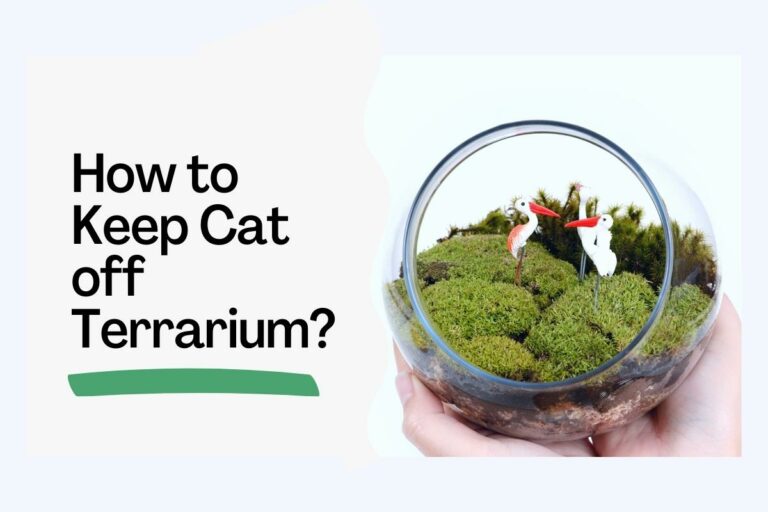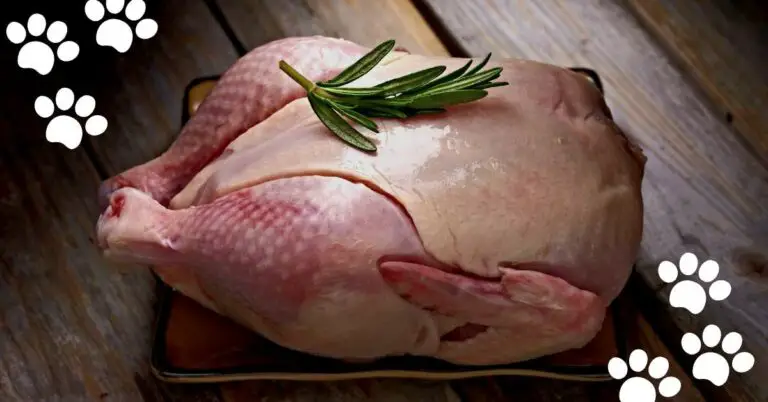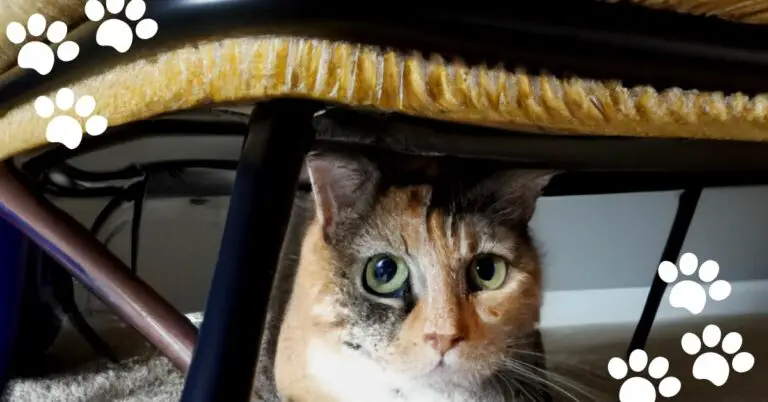Are Pine Trees Toxic To Cats? (and which parts?)
Yes, pine trees are toxic to cats. All parts of a pine tree–including the needles, bark and sap—can be hazardous for cats if ingested or if the sap is allowed to attach to fur and toxin absorbed through their skin.
Pine trees contain volatile oils that can lead to severe respiratory problems and gastrointestinal upset if a cat ingests even small amounts. Additionally, pine sap can cause skin irritation and a host of other issues for cats who come into direct contact with it.
Here in this blog post, I’ll be providing an overview of the potential dangers of pine trees to cats, as well as ways to prevent your feline friend from getting sick if they come into contact with a pine tree.
I’ll also include tips for how to treat your cat if they do eat some of the needles, bark or sap of a pine tree. By the end, you’ll have all the information you need to keep your cat safe. So let’s get started!
What are Pine Trees and What Do They Look Like?

Pine trees (Pinus spp.) are evergreen trees that have needles instead of leaves. They are found in every continent except Antarctica, and there are around 100 species of pine tree.
Pine trees can vary significantly in size, with some species reaching over 100 feet tall, and they can live for hundreds of years. The bark of a pine tree is usually thick and scaly, and the needles are arranged in clusters of two or three.
The cones of a pine tree are woody and typically measure 3-5 inches long. Pine trees play an important role in the ecosystem, as they provide habitat for animals and help to regulate the flow of water and nutrients in the environment.
Which Parts of the Pine Tree are Toxic to Cats?
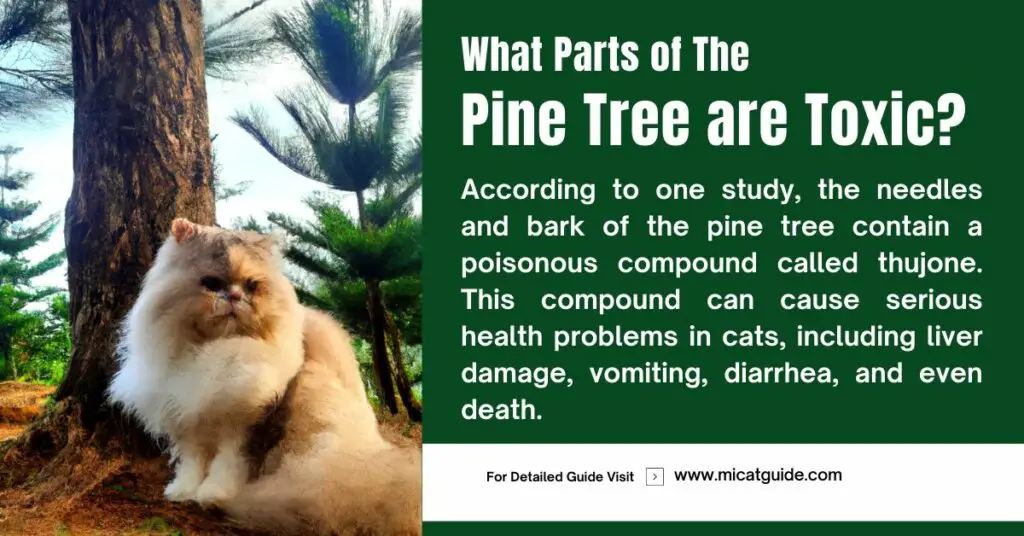
The pine tree is a beautiful evergreen that grows all over the world. It’s often used as a Christmas tree, and is popular in landscapes and gardens. However, while many parts of the pine tree are safe for cats to eat, some are highly toxic.
According to one study, the needles and bark of the pine tree contain a poisonous compound called thujone. This compound can cause serious health problems in cats, including liver damage, vomiting, diarrhea, and even death.
Another study found that the sap of the pine tree is also toxic to cats. The sap can cause skin irritation and contact dermatitis, which is a condition that causes inflammation and blistering of the skin.
So while most parts of the pine tree are safe for cats to eat, be sure to avoid the needles, bark, and sap if you have a feline friend. These parts of the tree can be harmful to their health.
Interesting Read: Are Avocado Plants Toxic To Cats?
Why Pine Trees Are Toxic to Cats?
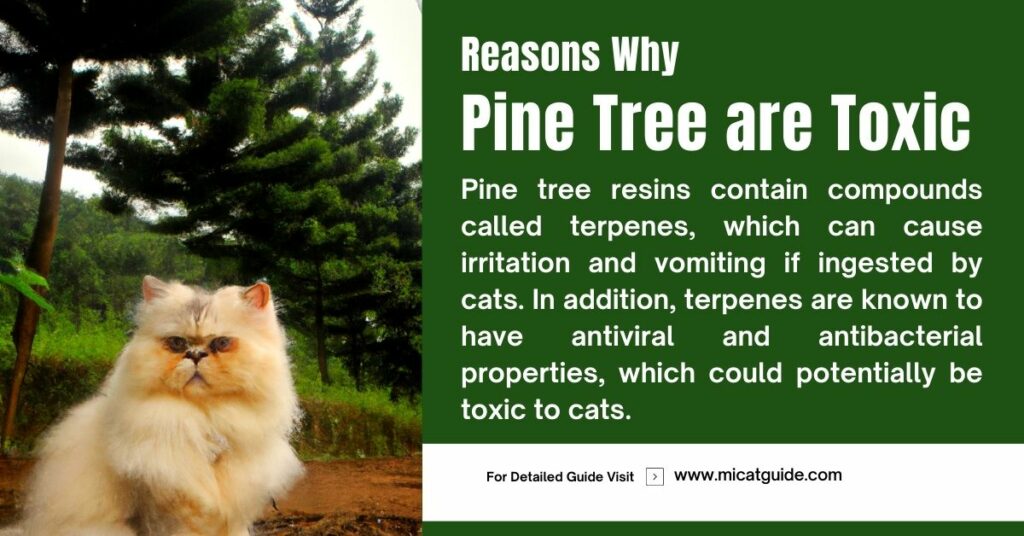
I know I said it little earlier but it’s important to emphasize again why pine trees are toxic to cats. To make this concept real, let me give some more details:
1. Pine Trees Contain Volatile Oils
Pine trees, like all conifers, produce volatile oils which are toxic to cats. These oils can cause gastrointestinal problems and neurological problems in cats.
Ingesting pine needles can also cause a build-up of fluid in the lungs, leading to difficulty breathing. A cat who has ingested pine oil may vomit, have diarrhea, seem disoriented or dizzy, and/or have seizures. If you think your cat has been poisoned by pine oil, contact your veterinarian immediately.
2. Pine Bark May Contain Pesticides
Sometimes, pine trees are treated with pesticides to protect against bugs and other pests. If a pine tree has been treated with a pesticide, the bark may contain harmful chemicals.
Ingesting this bark can cause serious health problems in cats, including liver damage and death. If your cat has ingested pine bark, take them to the veterinarian immediately for treatment.
3. Pine Cones Can Be Choking Hazards
Pine cones can be a choking hazard for cats. Even if ingested in small amounts, the sharp points of the cones can cause damage to a cat’s digestive tract.
Cats may also get a piece of the cone stuck in their throat, which can cause difficulty breathing and even choking. To keep your cat safe, avoid giving them access to pine cones or other objects that can be a choking hazard.
Symptoms of Pine Trees Poisoning in Cats
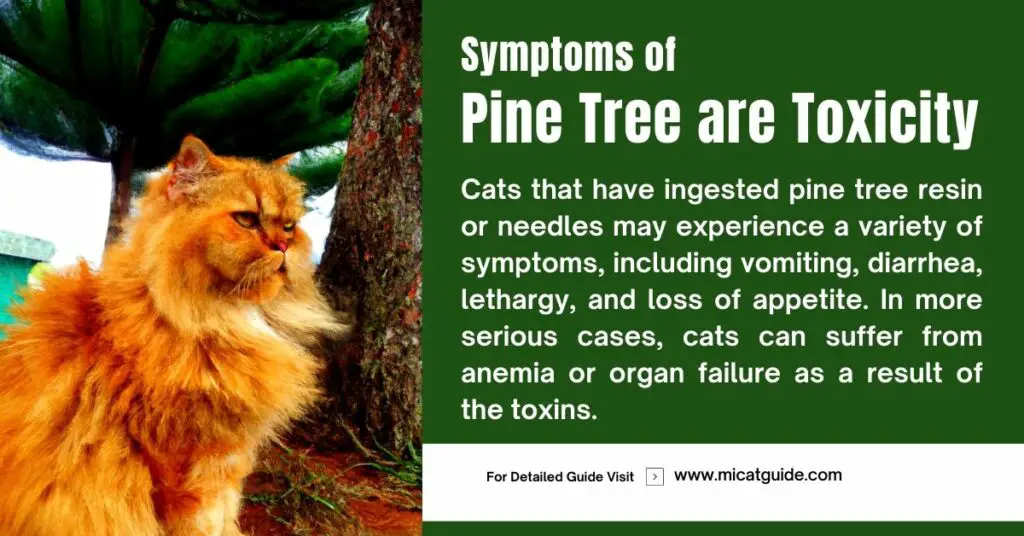
Cats are curious creatures, and their inquisitive nature often gets them into trouble. One of the dangers that cats may encounter is pine tree poisoning. Pine trees contain a substance called turpentine, which can be harmful to cats if ingested. Symptoms of pine tree poisoning include:
- Drooling
- Vomiting
- Diarrhea
- Difficulty breathing
If your cat shows any of these symptoms, it is important to seek veterinary care immediately. Treatment for pine tree poisoning will vary depending on the severity of the situation, but may include administration of fluids and oxygen therapy.
With prompt treatment, most cats will make a full recovery. However, it is important to be aware of the dangers that pine trees pose to cats so that you can take steps to prevent your feline friend from coming into contact with this potentially harmful substance.
Tips for Taking Care of Your Cat Around Pine Trees
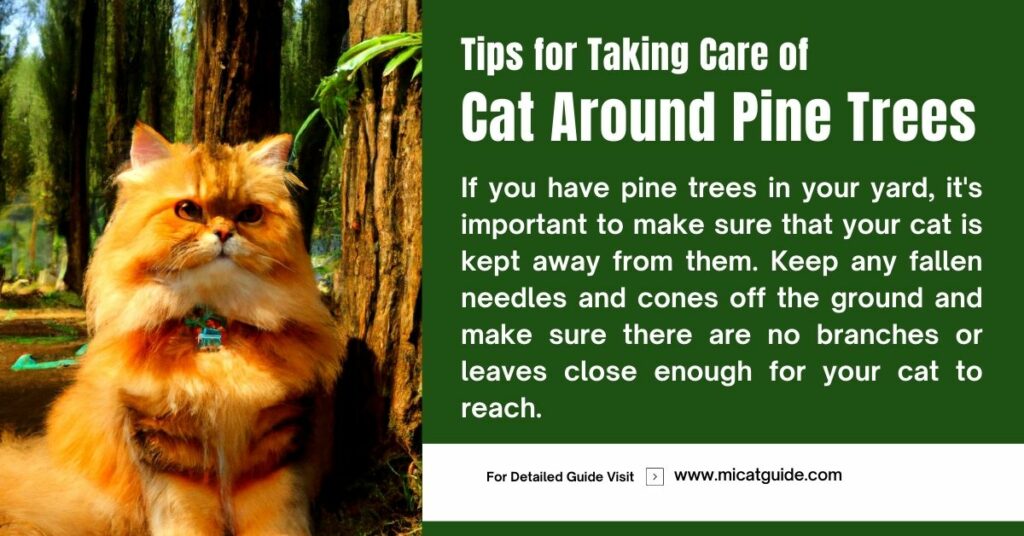
One study, published in the Journal of Veterinary Emergency and Critical Care, found that out of 151 cases of cats being poisoned by plants, pine tree was responsible for 5 of them. This means that the risk of a cat being harmed by pine tree is 3.3%. So, here I’ll provide some tips to help keep your cat safe around pine trees:
1. Avoid Planting Pine Trees
I know that pine trees are beautiful, but if you have cats in your home it’s best to avoid planting them. Even if the tree is in a garden or other area where the cats won’t be able to access it, there’s still a risk that they may find a way to get to it.
2. Keep Cats Away from Pine Trees
If you have pine trees in your yard, make sure that your cats don’t have access to them. Keep the trees fenced off or covered, if possible. If your cats are allowed outside, make sure that you supervise them and keep an eye out for any signs of illness or distress associated with pine tree poisoning.
3. Clean Up Pine Needles Regularly
If your cat has access to a pine tree, it’s important to regularly clean up any fallen needles. Even if your cat isn’t eating them, they can still be dangerous if they get stuck in their fur or are ingested in small amounts over time.
4. Check for Pesticides
If you do have a pine tree in your yard, it’s important to check for any signs of pesticides. These chemicals can be toxic to cats and other animals, so you should take the necessary steps to keep them away from treated areas.
By following these tips, you can help keep your cat safe around pine trees and reduce the risk of poisoning or injury.
My Final Thoughts
Now you know that pine trees are toxic to cats and can cause serious health problems. It’s important to be aware of the potential risks associated with pine trees and take steps to keep your cat safe.
If you have a pine tree in your yard, make sure that it is properly fenced off or covered so that cats cannot access it. Additionally, clean up any fallen needles regularly and avoid using any pesticides on the tree.
By taking these precautions, you can help ensure that your cat has a healthy and safe environment to explore and play in.


